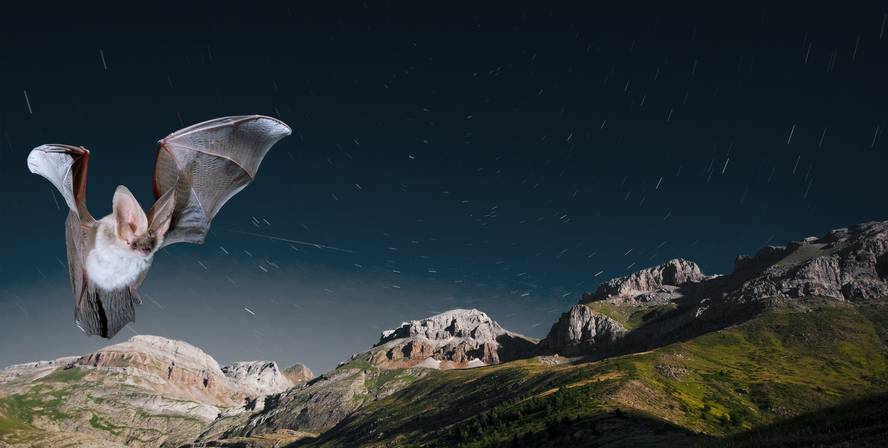Non hegoa, there the leg
That has been the objective of this doctoral thesis that we will tell you: to determine the ecological niche of an unknown animal that until recently has been out of the mark of scientists. I mean the great alpine bat (Plecotus macrobullaris), a very curious and interesting animal, as you will see. It was first described in 2003 in the Austrian Alps and for four years has been responsible for my sweats, headaches and enjoyment.
In 2010, which is already so distant, I wondered why this bat, unlike the rest, is related to the high mountains. Looking for a response, I began analyzing the ecological niche of the Alpine herbaceous along with members of the UPV/EHU Ecology and Behavior Evolution working group: where is this animal kept? Where do you hunt? What temperatures can it withstand? What do you eat? Each of these questions refers to an axis of the ecological niche, and what I'm going to tell below is what we learned in the four years we've spent looking for answers.
Grinnellés ecological niche
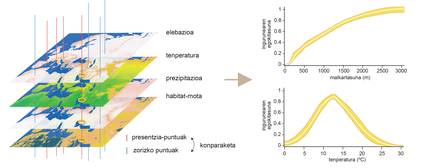
To begin with we define the ecological niche. Concept XX. Founded in the early 20th century with two researchers. On the one hand, Joseph Grinnell defined the ecological niche as a set of environmental conditions necessary for the survival of a species in 1917. According to Grinnell, in each natural environment there are certain conditions, and each being houses its space within this set of conditions. The characteristics that define the grinnellés niche of a being, whether temperature, humidity or hours of sun, cannot be modified by one's being, that is, they are schemenopoetic. Therefore, it is possible to predict the spatial distribution of these conditions and represent them in maps. From these maps it is possible to know the grinnellés niche of the species through an approach known as modeling the environmental niche (Figure 1). This technique compares the environmental conditions of the specific areas in which a species lives with those available throughout the area to determine which of the conditions to which the animal is accessed. Thus, for example, we knew that the great alpine ear lives in areas with an average temperature of between 5 and 25 ° C a year and that topographically it needs very rough environments to live. That is, the alpine herbaceous is a species that lives exclusively in areas of great slope within the aforementioned temperature range. This computer technique also serves to know the relative effect of each of the conditions analyzed in determining the distribution of the animal. In the case of the alpine herbaceous, we conclude that the influence of the topography is more significant than that of the climate, that is, that the geographical distribution of this species is more limited by the accident of the medium than by the temperature. Why?
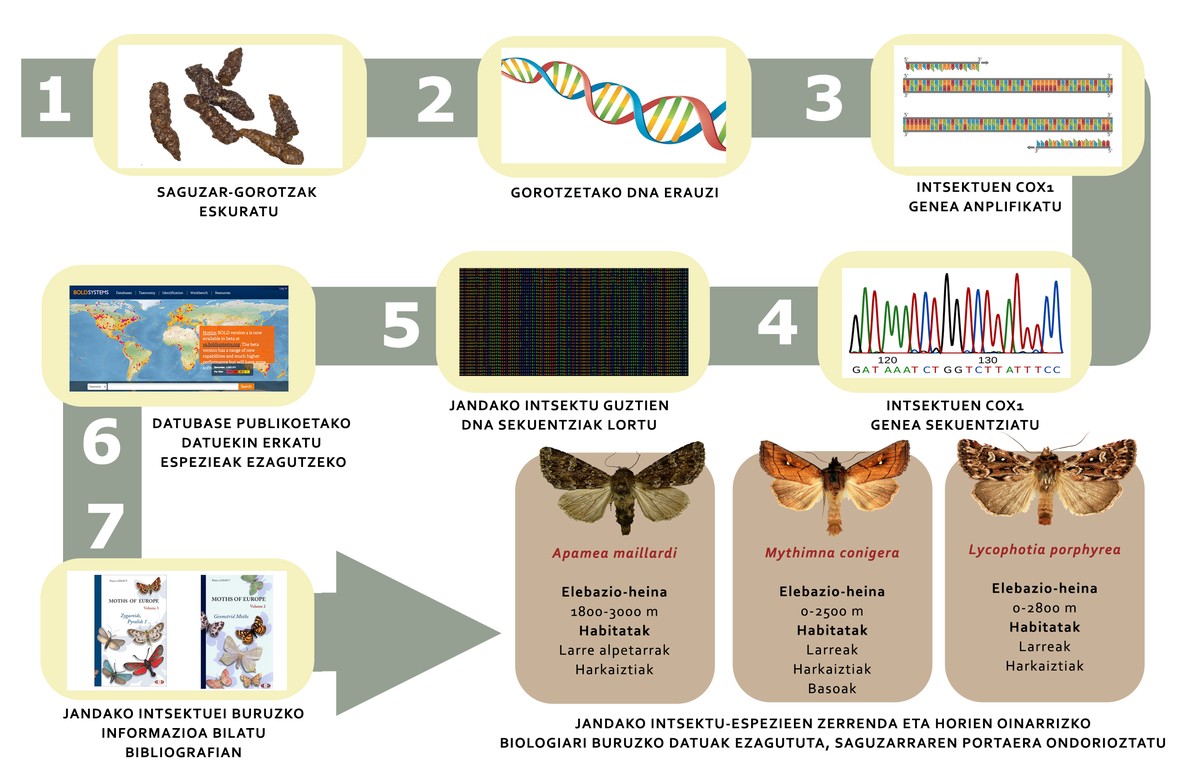
Rural ecological niche
The answer is beyond the realm of the grinnellés niche, defined by Elton ten years later. In 1927 Charles Elton addressed the concept of ecological niche from another perspective and expanded its meaning. Elton focused on environmental resources against environmental conditions. In fact, all organisms need certain resources, such as food, nesting material or deposit placement sites, which determine the ecological niche of organisms. Therefore, the alpine herbaceous needs specific topographic conditions (grinnellés niche), since this type of environment offers specific resources (Elton niche). Unlike Grinnelliense, the resources that define the Elton niche interact with one's being, that is, unlike temperature or humidity, the abundance of food can be altered or exhausted by the effect of one's being. Consequently, the representation of these resources in maps is practically impossible and requires other methods to know them.
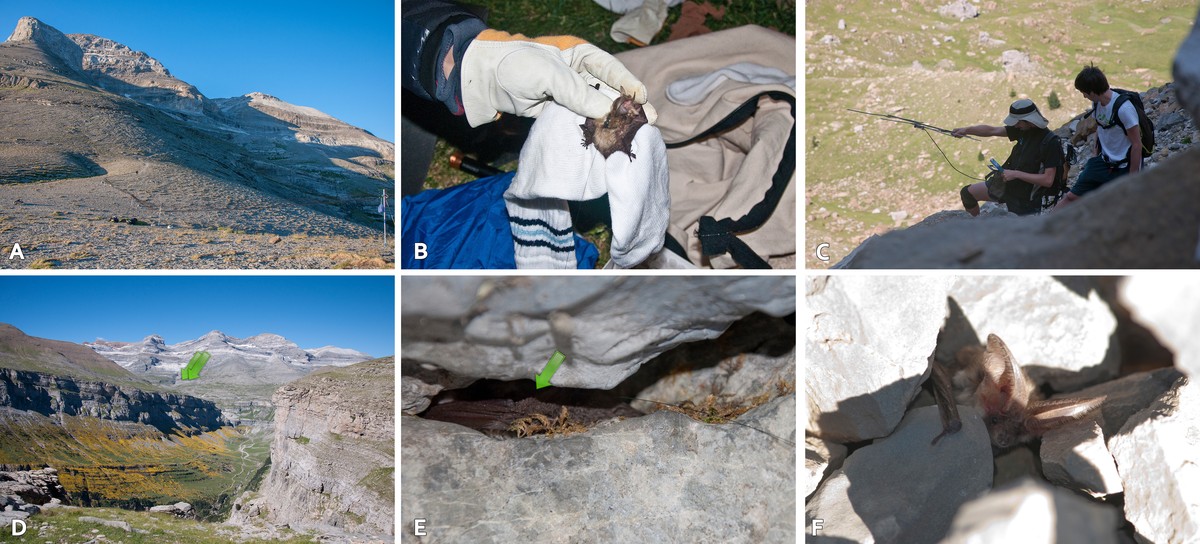
For bats, two are the main limiting resources: food and shelter. As far as food is concerned, the great alpine ear feeds on the slopes of the open areas of the high mountains, that is, the nocturnal butterflies that inhabit above the upper reaches of the forests. This is what was deduced by molecular techniques based on the DNA barcode (Figure 2). The DNA barcode is a part of the genome of standardized animals, a part of the gene called COX1, sequenced in millions of animals and made available to all researchers in giant databases. Thus, as if it were a barcode of a book, analyzing the DNA of the remains of an animal, such as hairs or feathers, we can know which species it belongs to. In the case of alpine herbivores, we studied the DNA of their excrements, and got to know which species of insects ate bats. From this information, it was concluded, for the first time among bats, that the main hunting habitats of the alpine herbaceous are alpine pastures and oak groves.
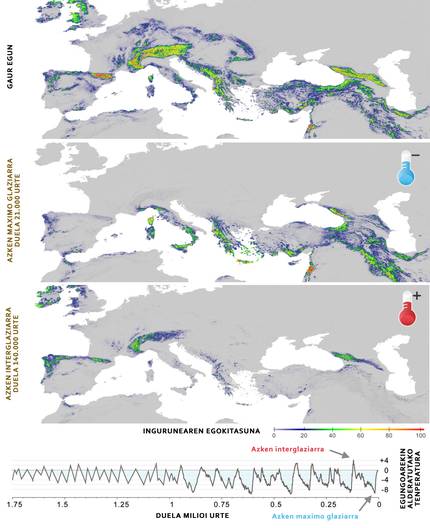
The next step in deepening the Elton niche was to determine the use they make of guards. To do this, we captured bats in high mountain meadows and oak groves and implanted radio emitters (Figure 3). These devices emit radio signals every second and through a few receivers you can locate the bat at every moment. Over forty bats followed during the seven days and where they were kept each day. To our surprise, bats were found in large rocky walls located between 1,500 and 2,500 meters and among gravel stones, finding a behavior never described among bats. After all this work we know, therefore, that the Alpine herbaceous bat does not eat any sits, but only of the open spaces of the high mountains, and that it is not kept anywhere, but in large stone walls and gravels. These resources, together with other strangers, form the Elton niche of the great Alpine ear.
From ecological niche to evolutionary history
One of the advantages of knowing the ecological niche of a species is that it allows to predict its spatial distribution. That is, knowing the conditions required by a species and its spatial distribution, we can predict which are the right places for a species and shape them into a map of suitability (Figure 4). If we know how these conditions and resources have evolved throughout history, we can also assess how the appropriate areas for the species have changed over time and, combining this information with molecular data, reconstruct the evolutionary history of a species.
To know the evolutionary history of the great alpine ear, we propose a series of hypotheses about the evolution of its populations over time, based on maps of suitability. Genomic DNA analyses were used to test these hypotheses. Once the samples of the southern membrane of 70 animals spread throughout the species distribution, DNA extraction and sequencing of the entire mitochondrial genome were performed, using the advanced technique known as shotgune sequencing for the study of DNA (Figure 5).
Genomic data revealed that the great alpine ear is divided into two main lineages: Animals of the Pyrenees and Alps (western lineage) and all of the most eastern mountain ranges (eastern lineage). These two lineages were distributed about 1.5 million years ago and, due to the glaciations that have occurred in this period, both populations have evolved very differently. The Western lineage has formed a small population with a reduced genetic diversity, which has been strongly affected by glaciations, since when temperatures cool, the Pyrenean and Alpine environment becomes inappropriate for the great Alpine ear (Figure 4), because these areas become too cold. The situation of the eastern lineage, however, is completely different, as throughout history several subpopulations have remained. In this case, living in temperate environments, when temperatures cool, increases the degree of suitability, which facilitates the survival of populations. This study served to demonstrate that populations of the same species may have very different responses to glaciations.
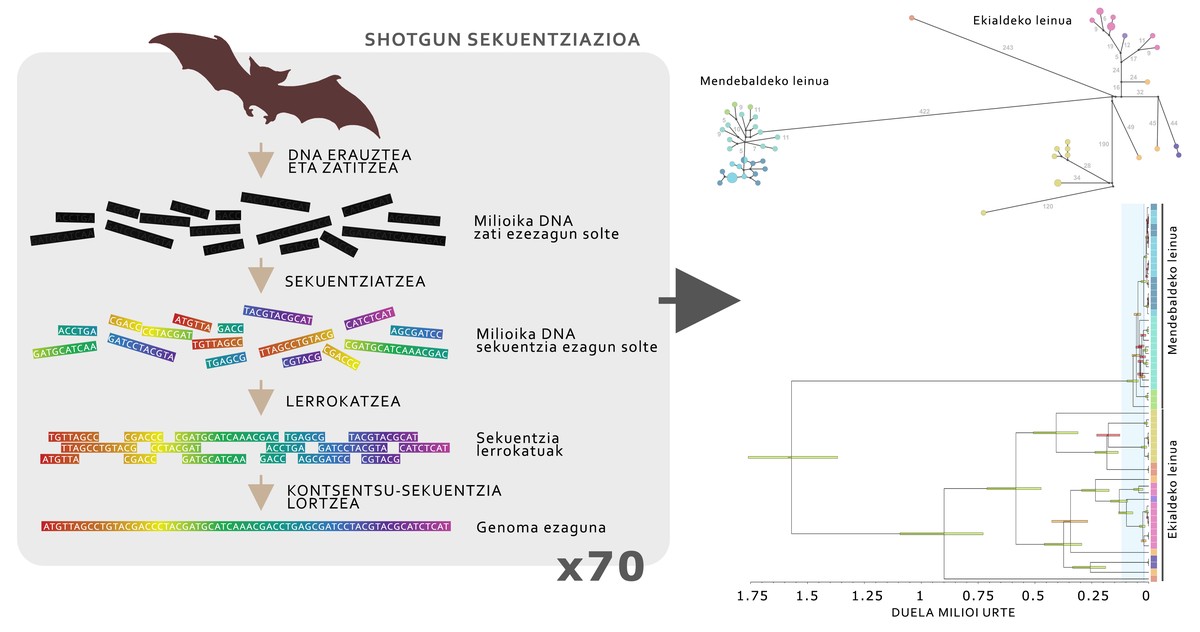
Knowing the past and the present to guarantee the future
A few years ago little was known about the alpine orejudo bat. We did not know what its distribution was, what it ate, where it was kept and without knowing that basic information it is impossible to take appropriate conservation measures. The work done, however, makes the current situation completely different. As with this species, with the help of technology developed in recent years, we are understanding the functioning of many elements and processes of nature; through research we are turning what was once a mystery into a knowledge rooted by evidence. It is now the responsibility of all to bring all this information to a practical level and to take appropriate measures to ensure the survival of the great alpine ear and of the other elements and processes of nature. Today, as never before, it is in our hands.
Bibliography
HEBERT, P.D. (1); BALL, S.L. ; DEWAARD, J.R. (2003): Biological identifications through DNA barcodes. Proceedings of the Royal Society B: Biological Sciences, 270, 313-321.
PHILIPS, S.; DUDIK, M.(2008): Modeling of species distributions with Maxent: new extensions and a comprehensive evaluation. Ecography, 31, 161-175.
SPITZENBERGER, F.; STRELKOV, P.; HARING, E. (2003): "Morphology and mitochondrial DNA sequences show that Plecotus alpinus Kiefer & Veith, 2002 and Plecotus microdontus Spitzenberger, 2002 are synonyms of Plecotus macrobullaris Kuzjakin, 1965". Chromatic Nature, 12, 39-53.
STEWART, J.R. LISTER, A.M.; BARNES, I.; DALEN, L. (2010): "Refugia revisited: individualistic responses of species in space and time". Proceedings of the Royal Society B: Biological Sciences, 277, 661-671.



